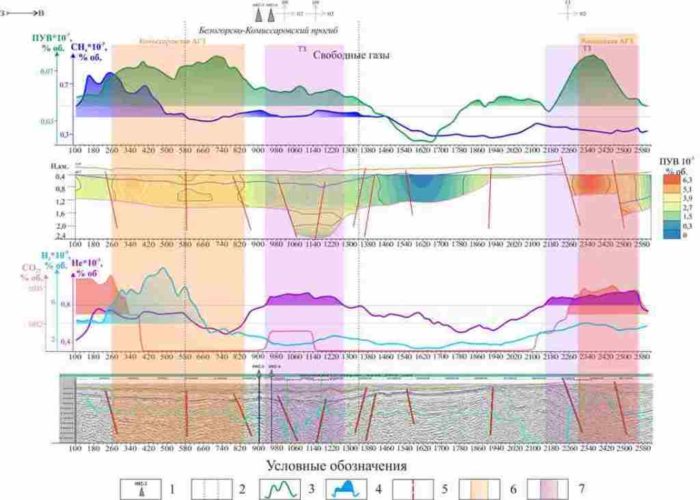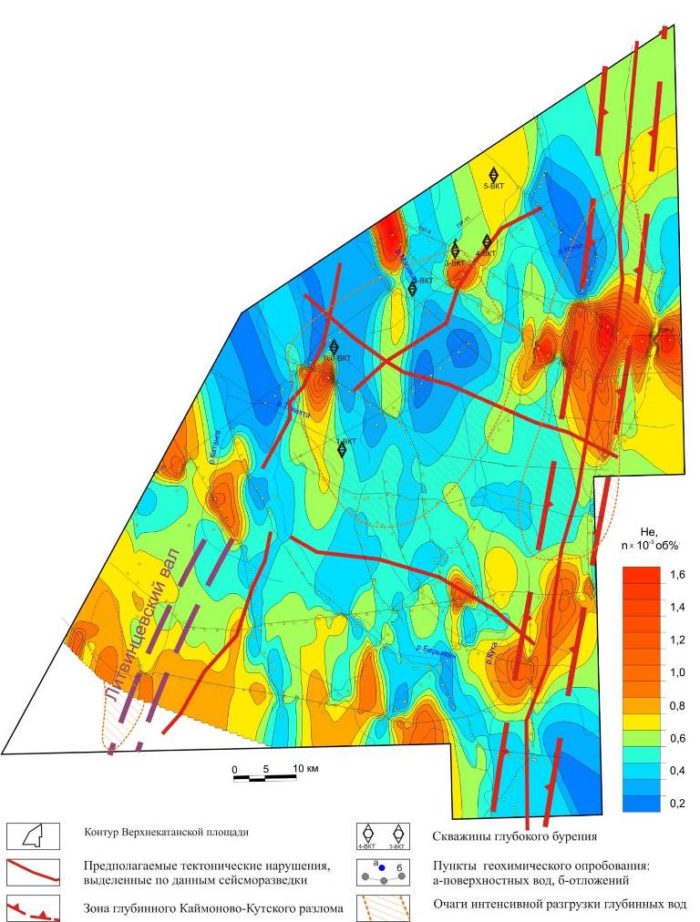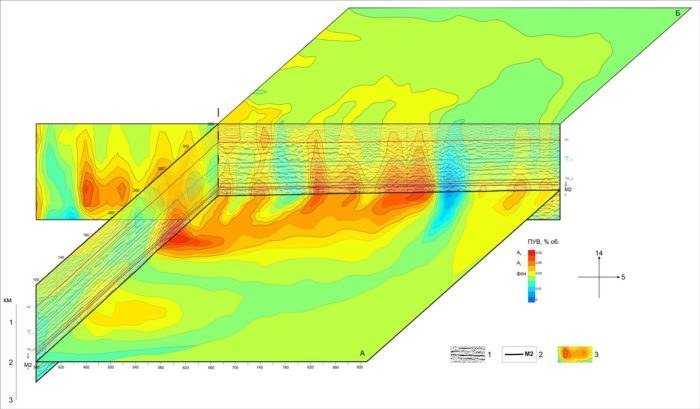The lithological, gas, and geochemical studies of near-surface sediments are performed independently or simultaneously with 2, 3D seismic prospecting in seismic profiles, mainly in winter at all stages of geological prospecting. The processing technology of geochemical works alongside seismic prospecting implies advanced sampling of wells in steps of 0.2-0.5 km in seismic profiles, with an interval of at least 1000 m relative to the SP. Geochemical testing of soils (slimes) and bottom hole air from shallow (1-2 m) wells located at pickets of seismic profiles are performed.

The technology of performing geochemical works on the profile together with seismic prospecting
The sampling includes the selection of lithological. gas and geochemical samples for extraction of sorbed gases, bitumen, as well as identification of secondary carbonates, physicochemical parameters (pH-Eh), polyvalent metals (Ni, V, Cu, Zn, Cd, etc.). The technology of geochemical sampling for seismic profiles, developed in the 1990s by Irkutsk geochemists, has improved in recent years and proved itself well in geochemical work in Eastern Siberia and the Far East.
Graphs of geochemical parameters distribution and design of deep geochemical sections (2D, 3D) are developed based on the obtained results. Modeling of geochemical fields of the APGP software system (solution of the inverse problem of geochemistry) at the level of potentially productive complexes is carried out with a selection of perspective objects by the method of “seismogeochemical” forecast of oil and gas saturation.
The following tasks are performed:
- zoning in the degree of oil and gas potential with an assessment of phase saturation and conditions favorable for the conservation of hydrocarbon accumulations;
- grading, ranking, and classification of local objects, identified by geophysical methods as having oil and gas potential;
- mapping of tectonic disturbances by a complex of geochemical indicators with identification of their fluid permeability;
- a delineation by detailed methods of development zones of oil and gas saturated intervals in the upper part of the section, including gas hydrates.



